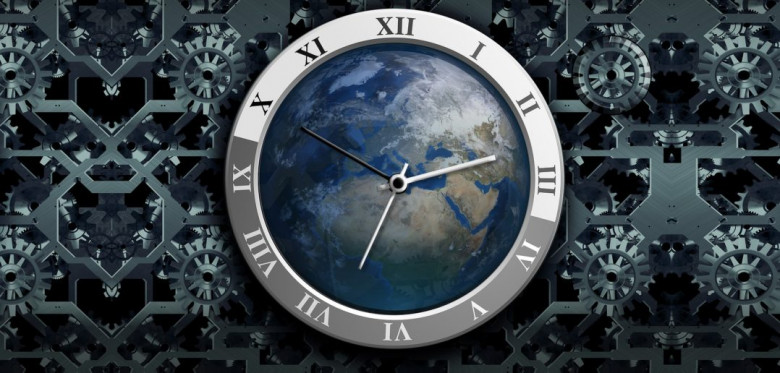75 Years On, the Doomsday Clock Keeps Ticking

In Stanley Kubrick’s classic 1964 satire Dr. Strangelove, it just takes one errant general in command of nuclear bombers, plus American and Soviet policies of “mutually assured destruction,” to trigger worldwide catastrophe. The darkly hilarious film dwells on risks that remain today, including the possibility of an automated launch system or a single person with access to nuclear codes bringing about a deadly mushroom cloud.
For 75 years, the Doomsday Clock has been drawing attention to risks to human existence. Developed by researchers and policy experts at the Bulletin of the Atomic Scientists, who also started a magazine by that name, the clock started running in 1947, just two years after the United States dropped nuclear bombs on Japan. It’s not literally a clock; it’s a graphic image of one, and it’s a potent symbol for scientific watchdogs and activists. It has had an effect on pop culture too; it’s been referenced by musicians from Sting to the Smashing Pumpkins to Iron Maiden, and in everything from Watchmen comic books to Doctor Who on TV. Its initial purpose was to highlight the dangers of nuclear war, but that mission was later expanded to encompass other primarily human-made crises that threaten civilization. Initially set at seven minutes till “midnight,” it’s now perilously set at just 100 seconds to midnight, the closest it has ever been to the end of humanity. On Thursday, as Bulletin members celebrate the clock’s 75th anniversary, they will update the time again, when it could tick slightly toward or away from the apocalypse.
“The Doomsday Clock has been called the most iconic piece of graphic art of the 20th century, and I think it’s proving to be as powerful in the 21st. It speaks to the power of the combination of art and science,” says Rachel Bronson, president and CEO of the Bulletin of the Atomic Scientists. To mark the anniversary, Bronson and her colleagues have also compiled a Spotify playlist, made a doomsday-themed drinking guide, and Hat & Beard Press will publish a book co-authored by Robert K. Elder and JC Gabel this spring about the clock's design and pop culture impacts.









































































